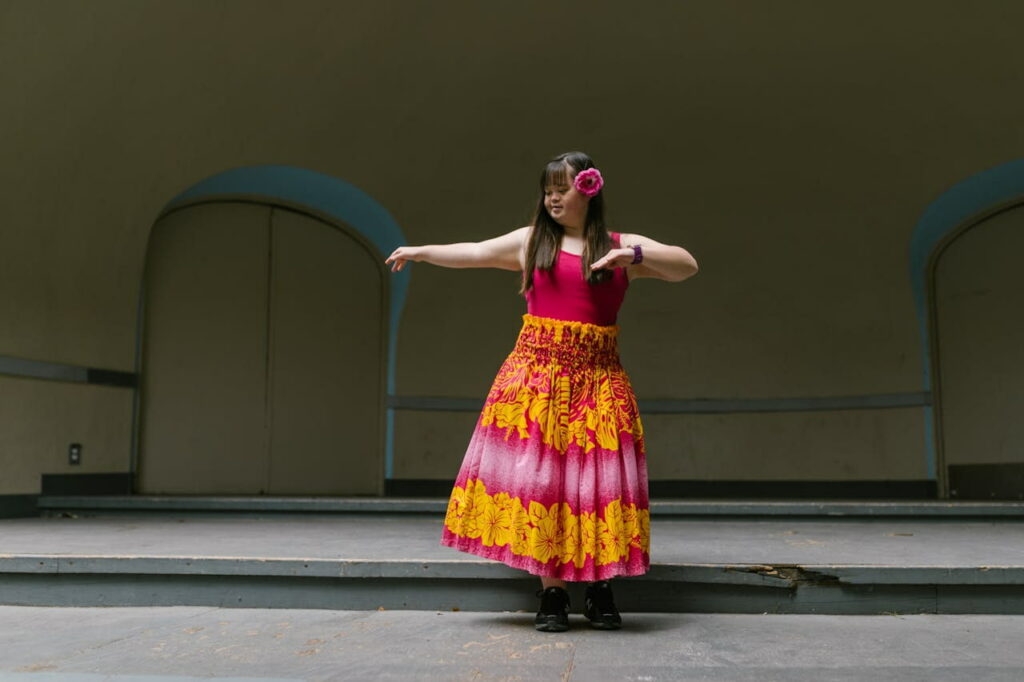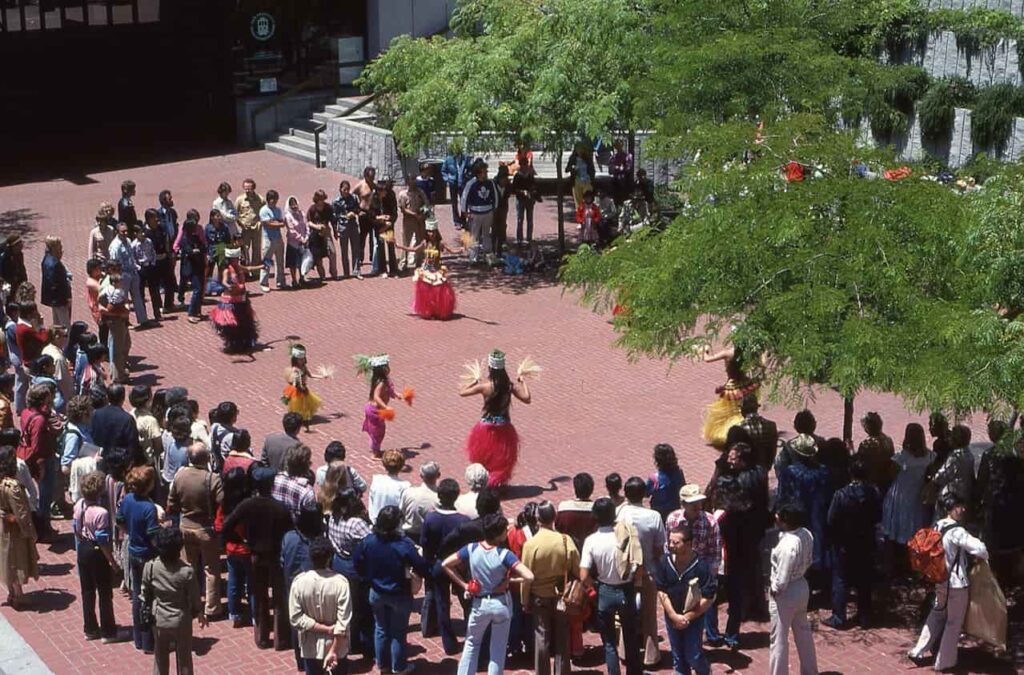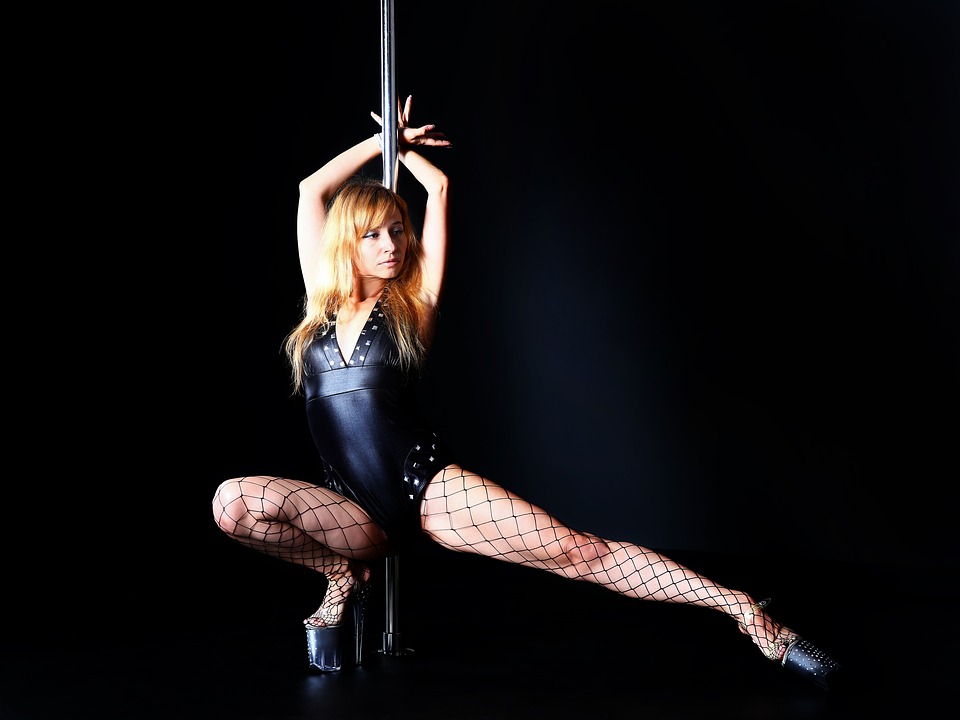
Summary
Traditional Hawaiian Dance: A Celebration of Polynesian Culture
Discover the fascinating world of Hawaiian dance. Hula, with its graceful movements and rich symbolism, is much more than a dance, it is a true cultural and spiritual expression. Learn the origins, styles and meanings of these captivating dances.
Summary
Origins and meaning of hula
Dive into the details of the gestures, clothing and instruments that make each Hawaiian dance performance unique. Every gesture, every garment tells a story, creating a deep connection with ancestors and nature.
History of hula
Hula is much more than just a Hawaiian dance. It has its roots in the ancient traditions of the Hawaiian Islands. Initially, hula was a form of communication used by ancient Hawaiians to convey their stories, myths, and legends. It is said that the first hula dancers were inspired by the surrounding nature: the waves of the ocean, the blowing of the wind, the movement of the trees.
Cultural and spiritual significance
Hula plays a central role in Hawaiian culture. This dance is much more than an artistic expression; it is deeply rooted in the spirituality of Hawaiians. Every movement, every gesture tells a story and conveys spiritual meaning. Hula dances are often performed during religious ceremonies and community celebrations, strengthening the bonds between participants and their ancestors.
Different styles of hula (kahiko, 'auana, etc.)
There are mainly two styles of hula: hula kahiko and hula 'auana.
Hula kahiko: This traditional style is often accompanied by ancient songs (oli) and percussion. Hula kahiko movements are more structured and rhythmic, reflecting discipline and respect for ancestral traditions.
Hula 'auana: More modern, hula 'auana is influenced by Western melodies and uses instruments such as the guitar and ukulele. The movements are more fluid and graceful, and the costumes more colorful, reflecting the evolution and adaptation of Hawaiian culture to contemporary influences.
Each style of hula has its own beauty and significance, providing a unique insight into Hawaii's history and culture.

Other Traditional Hawaiian Dances
The stick dance (Pā'ū)
The stick dance, known as Pā'ū, is a traditional Hawaiian dance that showcases the skill and coordination of the dancers. Movements include the manipulation of sticks, often decorated with traditional designs, which are struck together or on the ground in rhythm with the music. The choreography is complex and requires perfect synchronization between the dancers, creating a visually captivating spectacle.
The stick dance is more than just a show. It symbolizes the strength and resilience of ancient Hawaiian warriors. Every swing and strike of the stick tells stories of battle and victory, paying homage to ancestors and their bravery. This dance is often performed during ceremonies and festivals to celebrate the heritage and history of the Hawaiian community.
Hand dance (Hā'ā)
Hand dancing, or Hā'ā, is a delicate form of hula where hand gestures play a central role. Each hand movement is symbolic and tells a story. For example, a gesture imitating the flight of a bird can represent freedom or a spiritual message. Dancers use their hands to paint images in the air, creating a visually expressive and narrative dance.
Hā'ā is closely linked to Hawaiian tales and legends. Every gesture and movement is inspired by ancient stories, passed down from generation to generation. These dances help preserve and pass on the rich cultural heritage of Hawaiians, connecting dancers and spectators to the stories of their ancestors.
Seated dance (Noho)
The seated dance, known as Noho, is unique because the dancers perform their movements from a seated position. This dance form emphasizes hand gestures, arm gestures and facial expressions. The movements are precise and controlled, and the dance is often accompanied by singing and drumming which add to its emotional impact.
Historically, Noho dance was performed during royal events and important ceremonies. It symbolized respect and devotion to rulers and deities. Today, this dance continues to play an important role in cultural celebrations, recalling the traditions and values of Hawaiian society.
The basics of hula
To fully understand and appreciate the different Hawaiian dances, it is essential to master the basics of hula. This includes correct posture, fundamental hip movements (friend), and attention to grace and fluidity. Traditional Hawaiian dances are an expression of the soul and spirit of Hawaiian culture, and every dancer must learn to feel and express these emotions through their movements.
Dress
Explanation of traditional clothing (pa'u, kihei, lei, etc.)
Pa'u: The pa'u is a traditional skirt worn by hula dancers. Made from cotton fabric or paper mulberry bark, it is often decorated with colorful patterns representing nature and Hawaiian legends. The pa'u is wrapped around the waist and secured carefully, allowing dancers to move freely while adding visual flair to their movements.
Kihei: The kihei is a shawl or stole worn over the shoulder, often made of tapa (bark cloth) or cotton. It is decorated with traditional symbols and designs that tell stories or represent elements of nature. The kihei is an important element of the outfit because it adds a cultural and aesthetic dimension to the dance.
Lee: Lei are necklaces of flowers or leaves worn around the neck, head or wrists. Made from local flowers like plumerias, orchids or ti leaves, lei symbolize love, respect and welcome. Each dancer wears a lei to honor the gods, ancestors and spectators, adding a touch of natural beauty to their costume.
Meaning and symbolism
Symbolism of the pa'u: The pa'u is not just a piece of clothing, but a symbol of the connection between the dancer and the earth. The designs that adorn the pa'u tell ancient stories and honor the spirits of nature. To wear a pa'u is to embrace the spirit of the island and show deep respect for Hawaiian culture.
Importance of kihei: The kihei is often worn during important ceremonies and hula performances to represent the dancer's connection to their ancestors and gods. The patterns on the kihei can indicate the rank or lineage of the dancer, adding a layer of meaning to each movement of the dance.
The lei as a symbol of life: The lei is a symbol of life, growth and continuity. By wearing a lei, dancers express their gratitude for the blessings of nature and their wish for prosperity and happiness. Lei are also exchanged as a sign of welcome and respect, creating bonds between dancers and spectators.
Body language
Hand movements (friend)
Hand movements, called "friend", are essential in hula dancing. Each hand gesture tells a part of the story, evokes elements of nature or transmits emotions. For example, a waving hand may represent the ocean, while a circular motion may symbolize the sun. The dancers must master these gestures to bring the songs (mele) and legends to life.
Arm and shoulder movements
Arm and shoulder movements add an expressive dimension to hula dancing. The arms can imitate the flight of birds, the growth of plants or the wind blowing through trees. The shoulders, for their part, contribute to the fluidity and harmony of movements, adding grace and dynamics to the performance. The coordinated use of arms and shoulders helps create a visually captivating and narratively rich dance.
Hip and pelvic movements (friend)
The movements of the hips and pelvis, also called "friend", are characteristic of hula. These rhythmic and circular movements are not only aesthetic, but also loaded with meaning. The hips can represent the waves of the ocean, the rolling of hills, or the force of the earth. Mastering these movements is crucial to performing hula with authenticity and emotion.
Importance of grace and flow
Grace and fluidity are at the heart of hula gestures. Each movement must be executed smoothly and precisely, creating a harmonious and captivating dance. Smooth transitions between movements are essential to telling a coherent and engaging story. Dancers must embody lightness and elegance, reflecting the natural beauty of the Hawaiian Islands.

Conclusion
Hula and other traditional Hawaiian dances are rich in history and cultural significance. Every gesture and movement tells ancient stories and conveys deep emotions. Traditional clothing and gestures play an essential role in preserving these traditions.
Understanding the basics of hula, as well as the different styles and dances, allows you to better appreciate this unique art form. Young executives can discover a fascinating world of rituals and celebrations through hula. Hawaiian dance offers a deep connection with nature and ancestors.
Try dancing at DECIBEL
If you like to combine dance and cardio, DECIBEL® is perfect for you. In 45 minutes, our dynamic classes combine dance and fitness to boost your endurance and refine your figure.
Enjoy varied and energetic choreography in a friendly atmosphere. Our motivating coaches will help you tone your abs, thighs and glutes, all to lively music and soothing lights.
At DECIBEL®, each session is a real pleasure!
Read also
follow us
on instagram
Follow our news,
take advantage of our tutorials and participate to our
contests!
BREAKING NEWS!
Receive our newsletter.






